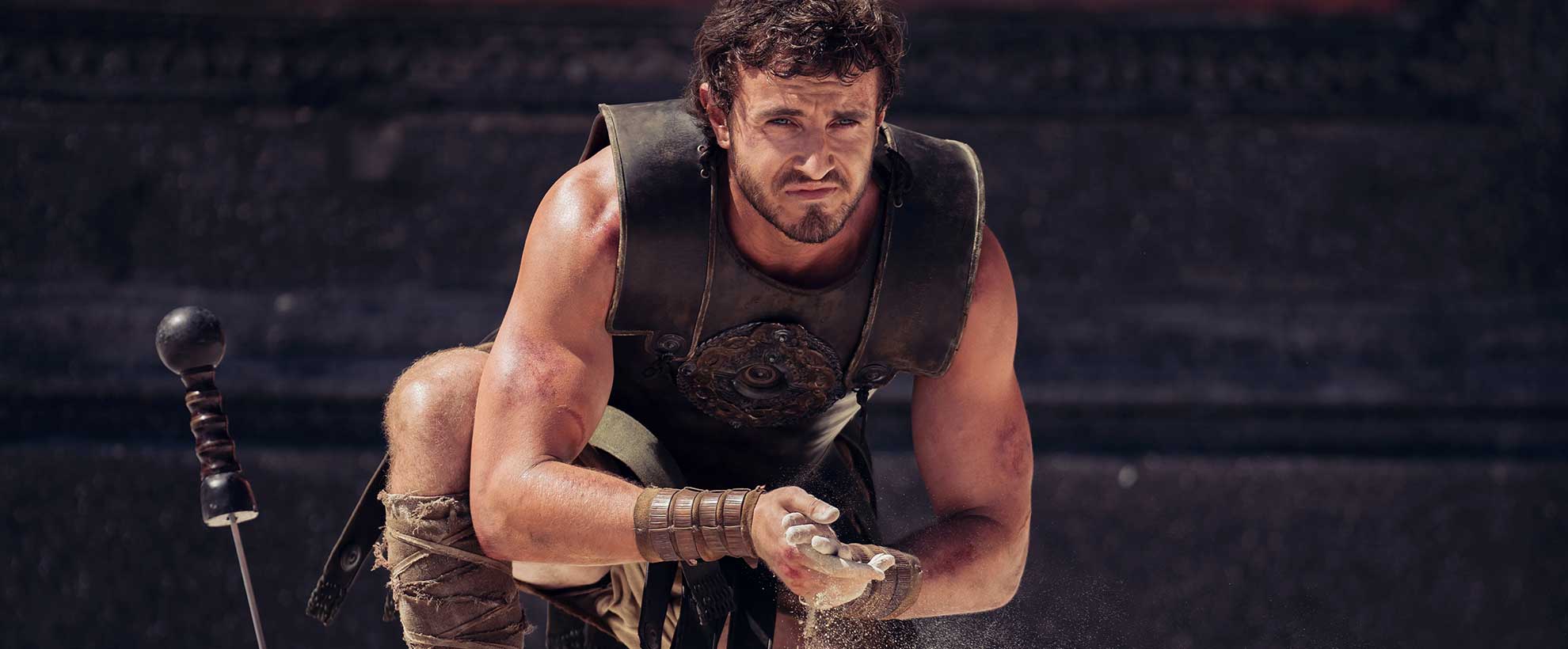
Gladiator II
From legendary director Ridley Scott, Gladiator II continues the epic saga of power, intrigue, and vengeance set in Ancient Rome. 24 years after Gladiator, Scott leveraged modern filmmaking techniques to capture his most epic action scenes to date—and our teams were at the heart of it all.
"CG allowed us to do things we couldn’t do on the first," explains producer Douglas Wick talking to Total Film. "We wanted to have a rhinoceros in the first movie (...) it was too expensive to do it just with CG."
Led by VFX Supervisor Christian Kaestner and VFX Producer Jeanne-Elise Prevost, our talented artists brought Scott’s ambitious vision to life, delivering 136 epic shots. The postvis, expertly handled by our FPS team led by Visualization Supervisor Darrin Hofmeyr, was instrumental in shaping these gladiatorial sequences.
From the chaos of a bloodied baboon frenzy, to a fierce duel with a rhino, and the hauntingly stylized River Styx environment, every scene was crafted by our artists with meticulous attention to detail. By combining cutting-edge VFX with Ridley Scott’s visionary storytelling, we helped turn ambitious concepts into true entertainment.

Gladiator II VFX Breakdown | Framestore
Carnivorous baboons
One of the standout gladiatorial scenes features a battle against twelve CG baboons with the dominant one with alopecia. The team’s main challenge was to create the alopecian baboon with meticulous detail, closely referencing real nature photography provided by Ridley Scott while giving the creature some personality traits to fight against Lucius.

"The level of detail we achieved with the alopecia baboon was extraordinary," says VFX Supervisor Christian Kaestner. "It wasn’t just about matching the reference—it was about bringing every shot to life. From scars and enhanced muscle definition to a bloody mouth and dynamic interactions, every element contributed to making the character feel alive. It’s rare to see this level of collaboration across departments—modeling, grooming, texturing—all working cohesively to make it happen."
The Stats Behind Making the Baboons
- 5 months of intensive grooming work
- 1,413,020 hairs meticulously crafted
- 957 fur operators to create the look
- 11,292,669 control vertices
- 56,632 particles
The ramming rhino
A combination of practical props and CGI were used to create the fight scene with the rhino. On set, a practical rig on wheels was used to represent the rhino, and then completely created in full CG by our team.

‘The real challenge was making the CG rhino move naturally while keeping the saddle and rider from the practical rig. We had to combine three different workflows, sometimes overlaying the plate with CG or going fully digital, to make sure it felt like a cohesive and believable scene." says Kaestner.
Throughout these sequences, the team made extensive use of industry-standard tools like Houdini for simulations and Carbon for cloth dynamics, while leveraging Framestore’s property technologies like a FAT system for muscle simulations.

Advances in CGI means Gladiator 2 can achieve what was too risky in the 2000 original, which is why we're getting 12 baboons, a "real rhino", and a "massive water battle with sharks" - Gamesradar
Gladiator II: Christian Kaestner (VFX Supervisor) & Kyle Dunlevy (Animation Supervisor) – Framestore - The Art of VFX